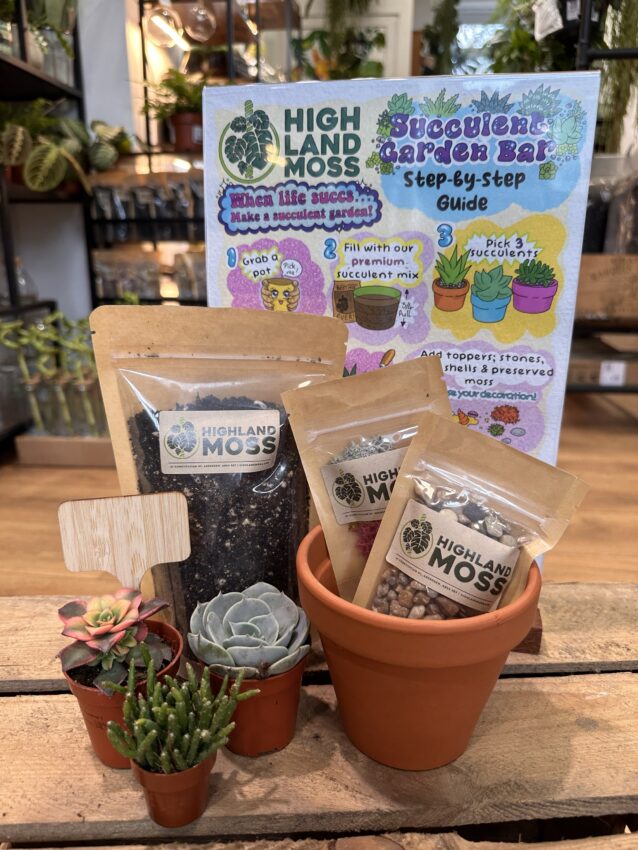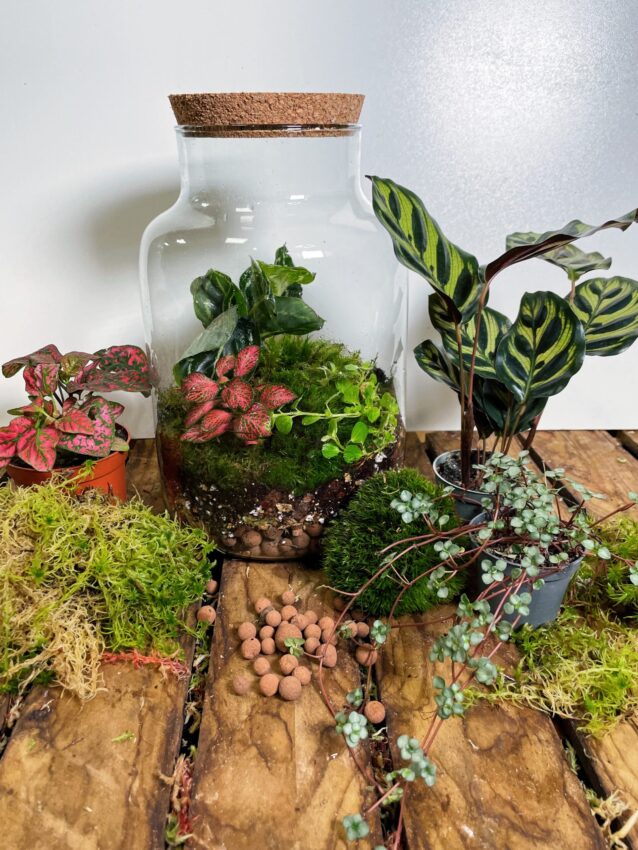Light
Bright indirect light
Water
Water when top of soil dries out. Water less in Winter.
Humidity
Medium to high humidity preferred but will cope with a lower humidity.
Toxicity
Scindapsus are toxic to pets if digested.
If you are eager to learn more about this genus, you can read our more in-depth guide below.
About Scindapsus
Scindapsus is a genus of evergreen plants originally from Asia, New Guinea and the Pacific islands.
In nature they can be found climbing rocks and trees, producing larger leaves as they climb. They are able to do so by clinging using their aerial roots. Although they are known to produce tiny flowers, they are seldomly seen when growing as indoor plants.

Species
Below is a list of the most readily available species in the market and often stocked in our shop.
Scindapsus Pictus
Perhaps the better-known species of Scindapsus, also known colloquially as “Satin pothos”.
The name Pictus means “painted”, and comes from the shiny silver speckles on the foliage.
Within the species of Scindapsus pictus, there are different varieties. In botanical terms, a variety is a rank below subspecies (Species -> Subspecies -> Variety -> Form).
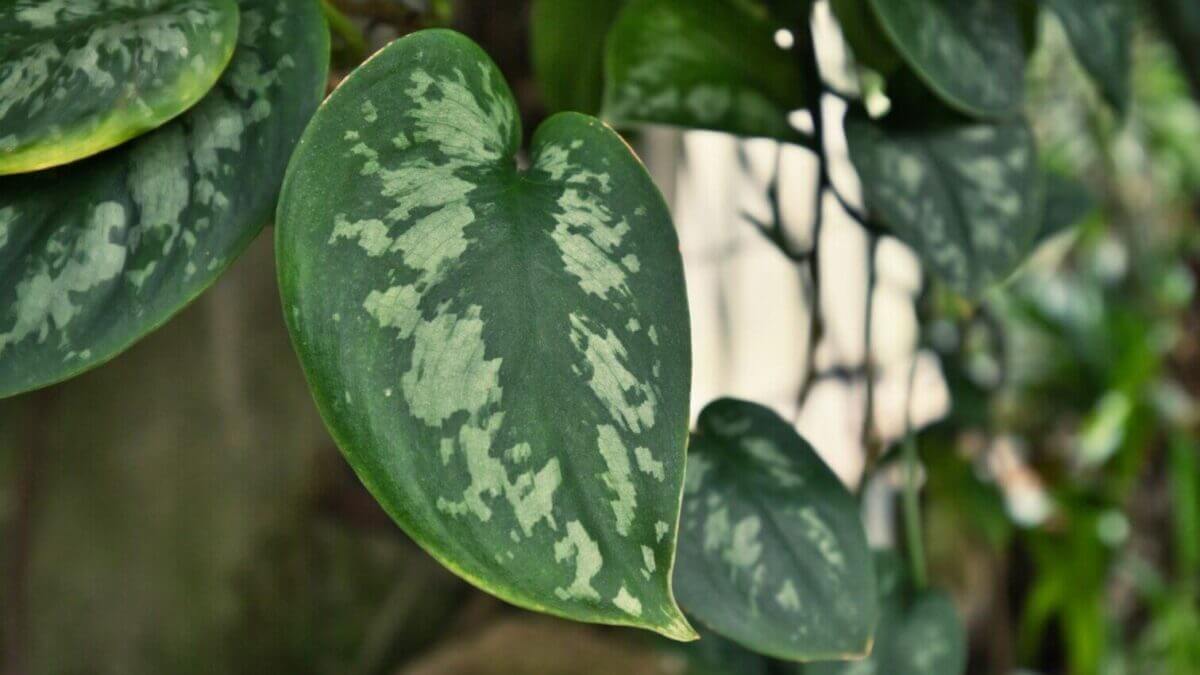
Scindapsus pictus ‘Argyraeus’
Argyraeus variety has smaller, dark green leaves. The silver variegation is evenly dispersed across the leaf in the shape of well-defined speckles. It has a relatively fast speed of growth compared to other varieties.
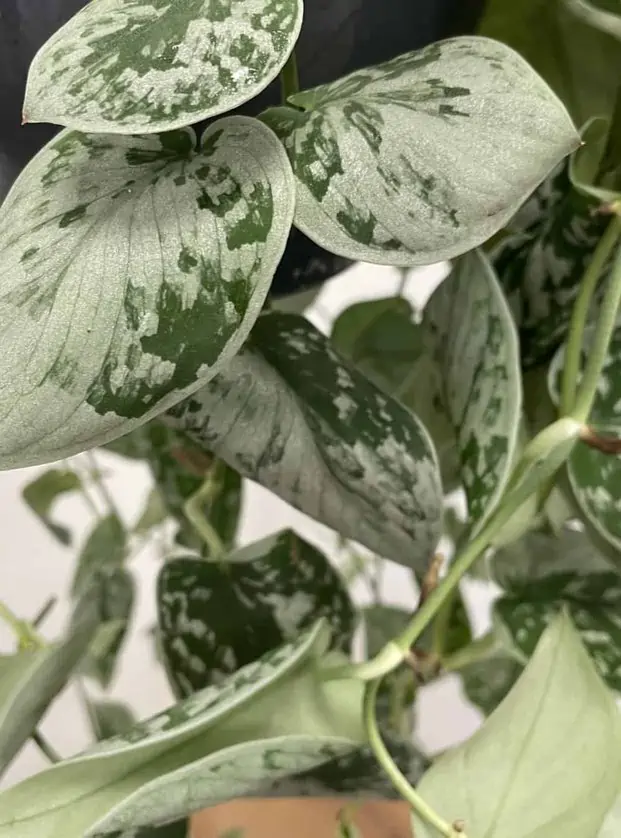
Silvery Ann
Argyraeus variety has smaller, dark green leaves. The silver variegation is evenly dispersed across the leaf in the shape of well-defined speckles. It has a relatively fast speed of growth compared to other varieties.
Silvery Ann is very similar to Argyraeus in terms of leaf shape and size. The main difference is the pattern created by the variegation.
It presents large splashes of silvery colour mostly concentrated on the tip of the leaves.

Exotica
The Exotica variety presents gorgeous, large, heart-shaped dark-green leaves with diffused silver variegation. It is a slower grower compared to the 2 previous varieties, which might be an advantage if you have limited space for your houseplant.
Scindapsus Treubii
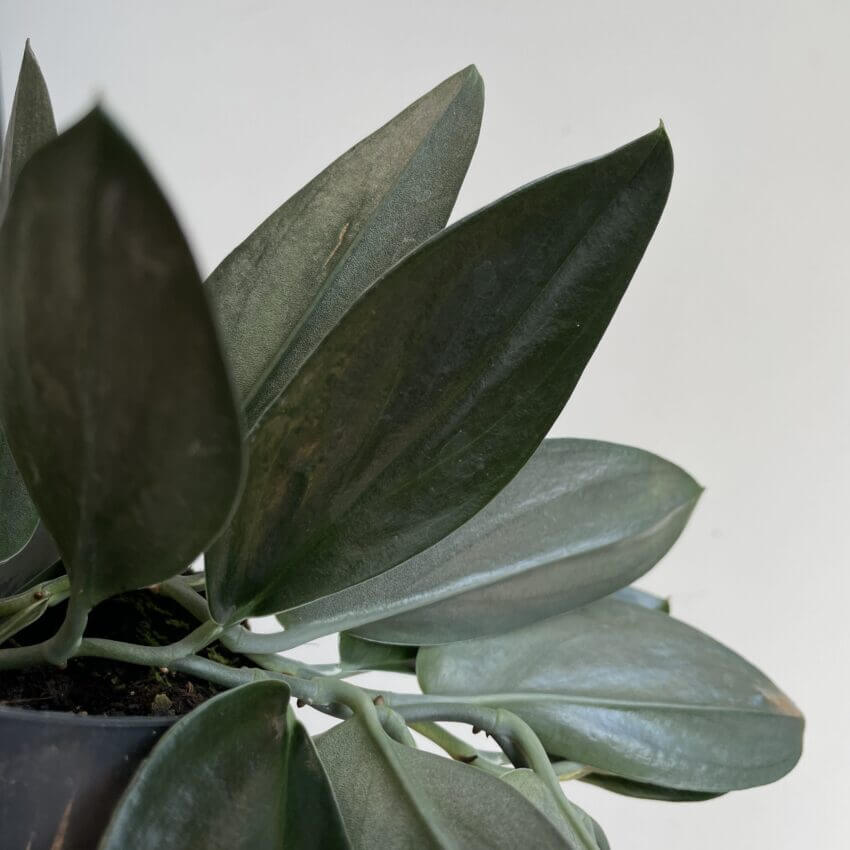
Scindapsus Treubii ‘Dark Form’
This variety has elongated leaves with very dark glossy green (almost black) colour. It is a rarer and slow growing variety of Scindapsus.
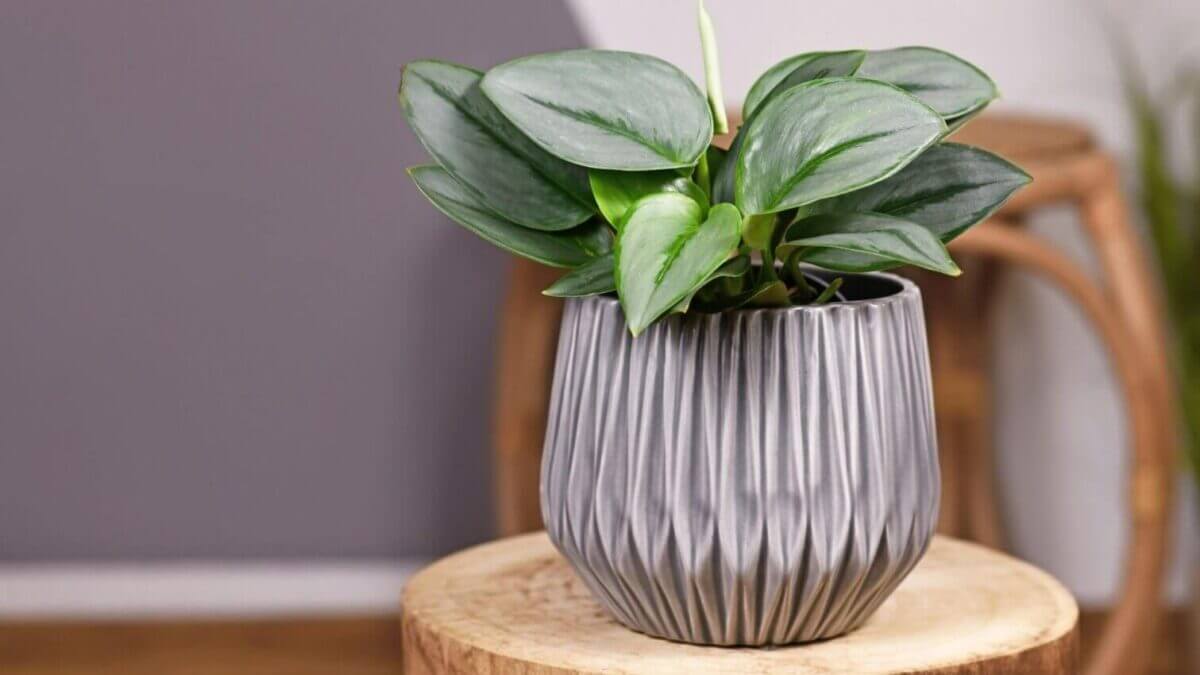
Scindapsus Treubii ‘Moonlight’
It has a similar shape to its counterpart the dark form. However, the Moonlight variety has green leaves with a silver sheen across the entire leaf.
Detailed Care Instructions
Scindapsus is a low maintenance genus of plants, which makes them ideal for beginner indoor gardeners.
Light Conditions
Bright filtered light with shade from hot sun, as this would burn the foliage of your plant.
Watering
Plants will tell you what they need if you listen to them. Scindapsus foliage will curl when it needs water.
You should allow the top soil to dry out between waterings, otherwise your plant might develop root rot. The frequency of watering will depend on your house conditions and your soil mix. In general, you will notice that your Scindapsus will not need as much water in winter.
Humidity
Scindapsus as with many plants, will thrive in a more humid environment. Nevertheless, it will tolerate normal household humidity levels (humidity levels should be at least 40%).
Pests
Scindapsus does not have an increased risk of attracting pests. If you notice any undesirable guests in your plant, you can find our pest guide here.
Soil
This genus is not particularly picky in regards of soil mix choice. To treat your plant and allow it to thrive, you should aim to mimic the tropical environment where it grows. This means a ‘chunkier’ soil mix with plenty amendments to make it airier. Find the perfect soil for your plant in our plant care section.
To trail or to climb?
Scindapsus will look great either way. You can get creative and hang your plant and allow it to trail, or even train it to climb walls using plant hooks.
If you wish to encourage more mature and larger leaves, Scindapsus needs to climb as it would do in nature. Our moss poles are the best way to do this, as the roots will be drawn into the lush sphagnum moss.
Toxicity
Scindapsus is toxic because it contains insoluble calcium oxalate crystals. Snacking on the leaves of this plant will release these crystals causing irritation of your mouth and digestive tract, vomiting and difficulty swallowing. It will also precipitate in the kidneys, leading to formation of kidney stones. The accumulation of these crystals in your pet’s kidneys might prove fatal.
If you suspect your pet may have ingested a potentially toxic substance, you should get in touch with your local vet as soon as possible.
Troubleshooting
My plant is growing ‘leggy’ (long distance in between leaves):
The most likely cause for this is insufficient light. Although Scindapsus can tolerate lower levels of light, your plant’s vines will appear sparse and leggy. Low light will also reduce the strength of the silvery variegation.
Why are the leaves curling?
Is the soil dry or wet?
If the soil is bone dry, your plant might be lacking hydration and should perk up after thorough watering.
If conversely, the soil is wet the issue is overwatering. This can be due to high frequency of watering or inadequate soil mix which retains moisture for longer. Make sure your pot has drainage holes and check the roots for signs of rot.
- Over fertilising. If you overdo it with the feed then the salt and nitrogen build-up in the soil will damage your plant. You might notice yellowing and curling of the leaves, or browning of leaf borders.
- Pests: Always look for pests if you notice the health of your plant is not on its best form. Check your plant thoroughly, and do not forget to look under the leaves. For advice on remedies for pests we have the perfect guide for you.
The tips of my plant are turning brown:
There are a few reasons for this common problem amongst houseplants, for more details check this consultation from our plant hospital section.



